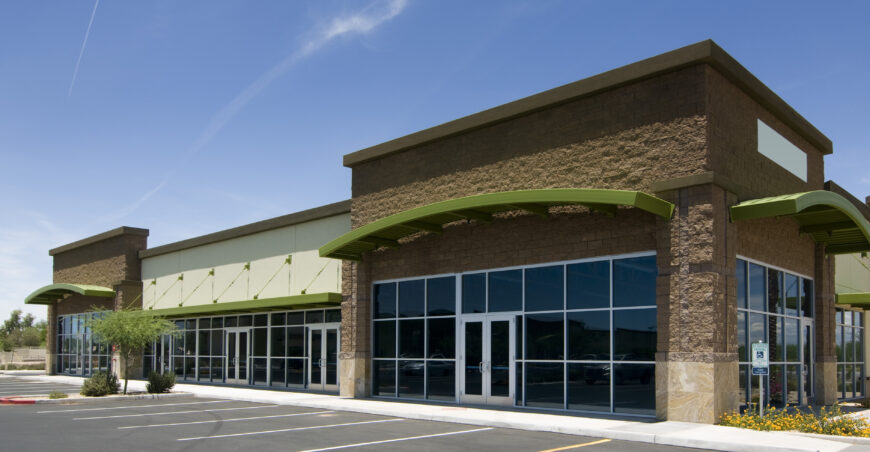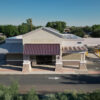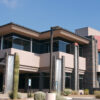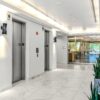The retail landscape is evolving rapidly, with shifts in consumer behavior and the rise of e-commerce leading to the closure of numerous dark retail spaces involving traditional brick-and-mortar stores. As a result, a growing number of retail spaces are left vacant, creating both challenges and opportunities for property developers and urban planners. This article explores the innovative trend of repurposing dark retail spaces, turning them into new properties that contribute to vibrant and dynamic communities.
The Rise of Dark Retail Spaces:
The term “dark retail spaces” refers to vacant or underutilized storefronts, a consequence of shifting consumer preferences, economic factors, and the rapid growth of online shopping. Big Box retail centers particularly face challenges in the ever-changing retail environment. Traditional retail giants have faced closures, leaving behind vast empty spaces that can be found in shopping malls, city centers, and suburban areas. Rather than allowing these spaces to become symbols of economic decline, forward-thinking entrepreneurs and developers are seizing the opportunity to breathe new life into these locations.
Repurposing strategies:
1. Mixed-use Developments
One strategy for repurposing dark retail spaces involves creating mixed-use developments. Mixed-use buildings are poised to play a pivotal role in shaping the future of our cities. Developers can transform vacant retail spaces into a combination of residential, commercial, and recreational areas. This approach maximizes the use of space, fostering a sense of community and bringing vitality back to previously desolate locations. This approach not only addresses the demand for housing in urban centers but also supports local economies by integrating commercial and retail components. The synergy of different functions in one area promotes a vibrant and 24/7 urban environment, enhancing the overall livability of the community. Additionally, mixed-use developments often encourage sustainable practices by reducing commuting needs, fostering walkability, and optimizing the use of existing infrastructure.
2. Community Hubs and Cultural Centers
Transforming dark retail spaces into community hubs fosters a sense of belonging and interaction. These spaces can house co-working areas, communal gardens, or cultural centers, serving as gathering spots for residents. One good example of this is the High Line, New York City wherein they repurpose this historic structure into an elevated park, offering a unique and scenic experience for locals and tourists alike while contributing to the economic vitality of the surrounding area. By incorporating elements of collaboration and creativity, these hubs become integral components of urban renewal. Meanwhile, transforming vacant retail spaces into community and cultural centers serves to engage and connect residents. These centers can host art exhibitions, workshops, and events that contribute to the cultural enrichment of the community.
3. Residential Conversion
Abandoned retail buildings are being converted into residential properties, addressing the growing demand for housing in urban areas. Repurposing these spaces addresses the growing demand for housing in densely populated urban areas, utilizing existing structures to create additional living spaces. This adaptive reuse can contribute to revitalizing neighborhoods, transforming once underutilized or vacant areas into vibrant, livable communities. Moreover, the conversion promotes sustainable practices by reducing the need for new construction and optimizing the use of existing infrastructure. The infusion of residential units into these spaces also fosters a sense of community, as residents contribute to local economic activities and social interactions.
“The Grand Avenue Mall – Downtown Milwaukee opened in 1982 and featured over 80 tenants. Impacted by the GFC, the mall’s performance declined and was sold a number of times. Ultimately, Hempel Companies bought the struggling mall and introduced new plans to reposition the asset, part of which includes a 52-unit apartment conversion of the original Plankinton Arcade on the mall’s first two floors. The Plankinton Clover Apartments, which opened in 2019, feature a host of amenities including pickleball courts, a dog wellness area, community lounge, and a fitness center.” According to Real Estate Consulting.
4. Industrial Conversion
Converting dark retail spaces into industrial facilities offers several advantages for urban development and economic growth. Firstly, repurposing these areas for industrial use can help meet the increasing demand for space by businesses involved in manufacturing, production, or logistics. This adaptive reuse of existing structures minimizes the need for new construction, contributing to more sustainable urban development. One example of Industrial conversion is the plans of LaTerra Development to convert a former Fry’s Electronics Store to an industrial building in Natomas, just north of Downtown Sacramento. The conversion would result in a 155,000 square foot industrial building. The transformation of dark retail spaces into industrial hubs also has the potential to stimulate local economies by attracting businesses that create job opportunities and drive economic activity.
5. Office conversions
Converting dark retail spaces into office spaces yields several advantages for urban development and the business landscape. This adaptive reuse addresses the evolving needs of the workforce by providing additional and often centrally located office spaces in urban areas. The repurposing of these spaces reduces the demand for new construction, contributing to sustainable development practices. Moreover, the conversion of retail spaces into offices can contribute to the revitalization of urban cores, attracting businesses to previously underutilized areas and fostering economic growth. The proximity of office spaces to commercial areas may also lead to increased foot traffic, benefiting local businesses and creating a more vibrant and dynamic urban environment.
Challenges, Considerations and Opportunities
Repurposing dark retail spaces, while advantageous, comes with its set of challenges. One significant obstacle is the need for substantial investments in adaptive renovations to meet the specific requirements of the intended new use, whether it be residential, industrial, mixed-use, or community oriented. Converting existing structures often involves overcoming architectural and infrastructural constraints, such as outdated designs or insufficient utility systems. Zoning and regulatory issues may pose hurdles, requiring careful navigation through complex legal frameworks. Additionally, the potential mismatch between the original retail layout and the demands of the new purpose may demand creative problem-solving and compromise. However, overcoming these challenges can lead to the revitalization of neighborhoods, increased property values, and the creation of unique, dynamic spaces that meet the diverse needs of modern society.
The transformation of dark retail spaces into diverse and purposeful environments represents a forward-thinking approach to urban revitalization. By embracing adaptive reuse, communities can turn abandoned structures into dynamic hubs that meet the evolving needs of society. These repurposed spaces not only contribute to the aesthetics of a community but also foster creativity, collaboration, and a sense of identity, making them integral components of a thriving urban landscape.
If you are interested in learning more about property innovations and conversions, feel free to reach out to us at ICRE Investment Team any time. We’d be happy to help supply you with information on any relevant properties or markets, alongside any connections in lending, investing, brokerage service or consulting that you might need!
















